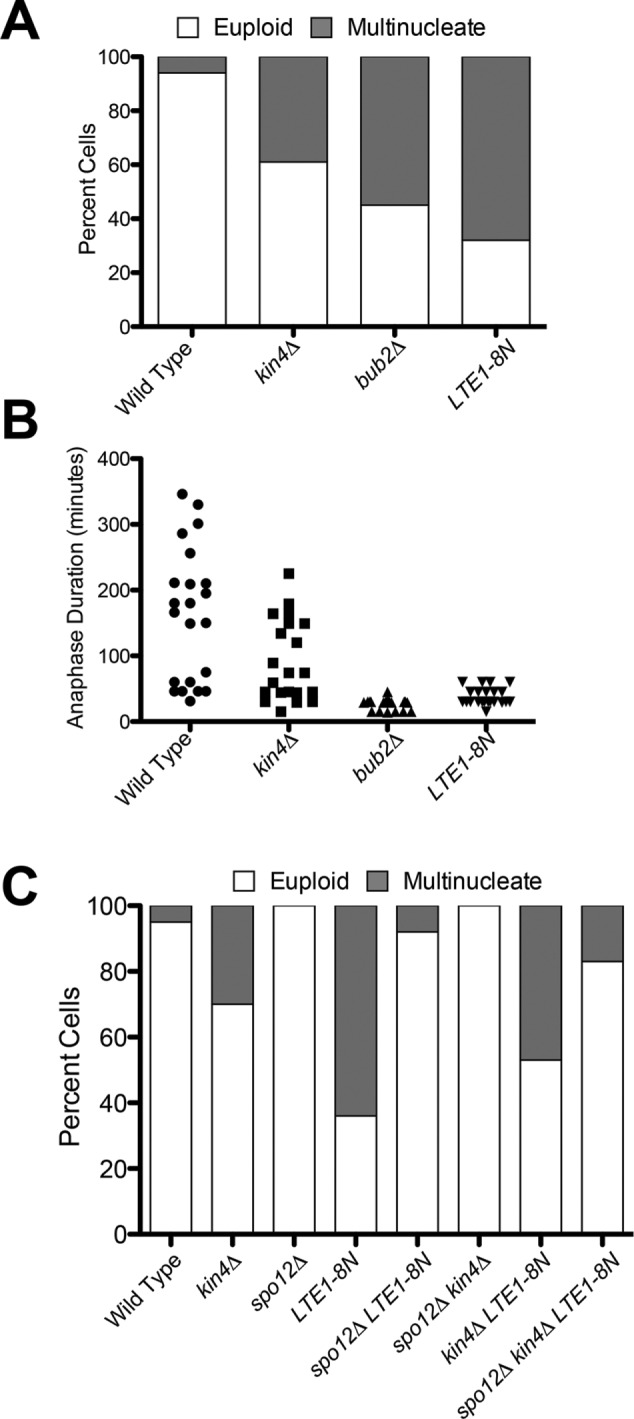FIGURE 6:

Mislocalizing Lte1 to the mother cell compartment bypasses the SPoC even in the absence of the FEAR. (A) The percentage of multinucleate cells was assessed in dyn1-AID kar9Δ (A35707), dyn1-AID kar9Δ kin4Δ (A35603), dyn1-AID kar9Δ bub2Δ (A36082), and dyn1-AID kar9Δ LTE1-8N (A36357) strains. Cells were cultured as in Figure 2. Spindle mispositioning was scored as in Figure 2A (n = 100). (B) Analysis of anaphase duration in cells that inappropriately exit from mitosis in the mother cell compartment. Cells from A were reanalyzed, and anaphase length was determined by spindle morphology (n = 22). (C) The percentage of multinucleate cells was assessed in dyn1-AID kar9Δ (A35707), dyn1-AID kar9Δ kin4Δ (A35603), dyn1-AID kar9Δ spo12 (A35700), dyn1-AID kar9Δ LTE1-8N (A36357), dyn1-AID kar9Δ LTE1-8N spo12Δ (A36358), dyn1-AID kar9Δ spo12Δ kin4Δ (A36048), dyn1-AID kar9Δ kin4Δ LTE1-8N (A36268), and dyn1-AID kar9Δ LTE1-8N kin4 Δ spo12Δ (A29611) strains. Cells were cultured as in Figure 2. Spindle mispositioning was scored as in Figure 2A (n = 100). Note that the anaphase duration of cells with aligned spindles in the LTE1-8N spo12Δ strain (A36358) was delayed in comparison to spo12Δ cells. This is most likely due to the fact that Lte1-8N is expressed off of its endogenous promoter and yet is distributed on both cortices. Therefore Lte1-8N is essentially depleted in the bud, and so, under sensitizing conditions (such as in the absence of FEAR network activity), cells are delayed in anaphase.
